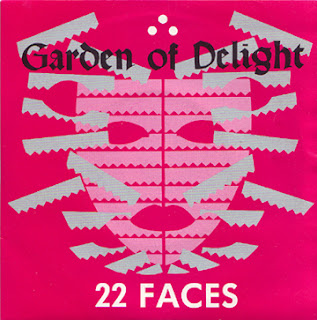If the only aspect of The Cult you’re familiar with is as the famous hard rock stadium act churning out MTV crowd pleasers like “Love Removal Machine” (Beggars Banquet, 1987), this might be a good time to sit down, because you’re in for something of a shock. The Cult as we know them today is nothing at all like their original incarnation as Southern Death Cult.
The history of Southern Death Cult proper begins in 1981 with Ian Astbury joining an existant but dying punk band in Bradford known as Violation. He persuaded them to change their name to Southern Death Cult, the name both a Native American reference (an obsession of Astbury’s which would recur many times throughout his career) and also a nod to the disparity of power and influence between Southern and Northern halves of the UK
The band toured with both Bauhaus and Theatre of Hate throughout 1982, providing them with massive exposure and coverage in the alternative media, rapidly becoming very big on the post punk scene despite lack of any significant amount of released material.
The Fatman 7" - Southern Death Cult cover art here demonstrating just
how thin the wall really was between punk and what would
become understood as early "Goth".
Indeed, during their brief existence, the band released just two teensy pieces of vinyl, The Fatman 7” and the Moya 12” (both on Beggars Banquet, 1982), and each containing both of the title tracks, although Moya includes a third song “The Girl”. Both are interesting, not only musically, in the sense that the listener can easily sense just how far the influence of this band would be felt, but also in their political commentary, an element that would become increasingly rare as Goth continued to develop as a genre.
Looking at the footage below, it becomes very obvious just how far removed Southern Death Cult were, both visually and musically from The Cult that we know today.
Southern Death Cult would disband after just 16 months in February 1983. The explanation for breaking up that “expectations were just way too high” has frankly never satisfied me, it seems a singularly silly reason to disband. The explanation that Ian felt the various elements of Southern Death Cult were “working against each other” seems rather more reasonable (Mercer, Gothic Rock, Pegasus Publishing, 1991).
Never fear though gentle reader! Astbury with his new partner in crime, Billy Duffy (formerly of The Nosebleeds, Lonesome No More, Slaughter and the Dogs and most importantly, Theatre of Hate) would soon form Death Cult. The rest of them go on to form Getting the Fear, and later the hugely underrated Into A Circle
But Death Cult is a tale for another time…
Track Listing:
1. Moya
2. Fatman
3. The Girl
After the band’s break up, Beggars Banquet released a compilation of various material, clearly sparing no expense on the cover art.
There are several different versions of this out there, with quite different track listings. Only the later CD releases include “The Girl” though, so you know what to look for…
There are several different versions of this out there, with quite different track listings. Only the later CD releases include “The Girl” though, so you know what to look for…
Line Up:
Ian Astbury (vocals, guitar), David Burrows AKA: Buzz (guitars) Aki Nawaz (drums), Barry Jepson (Bass).


















